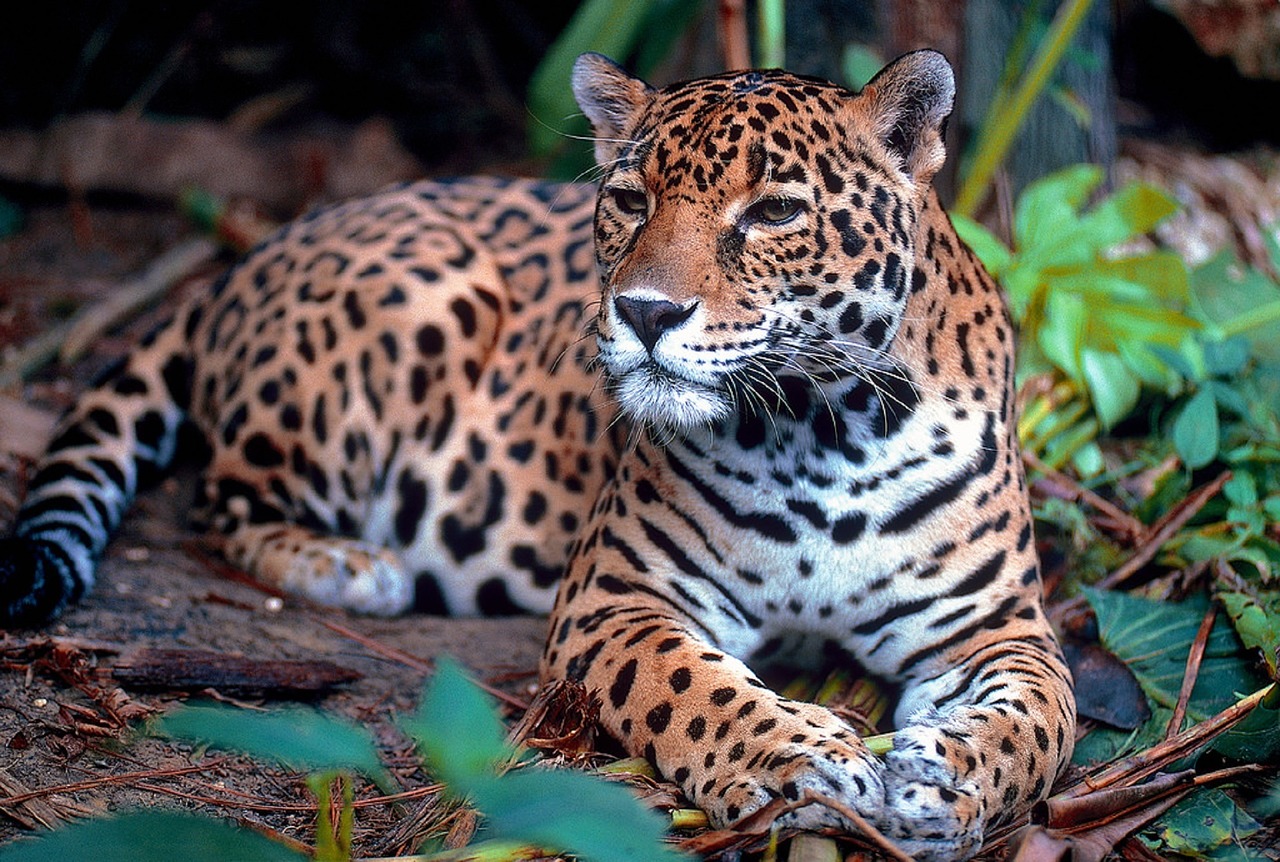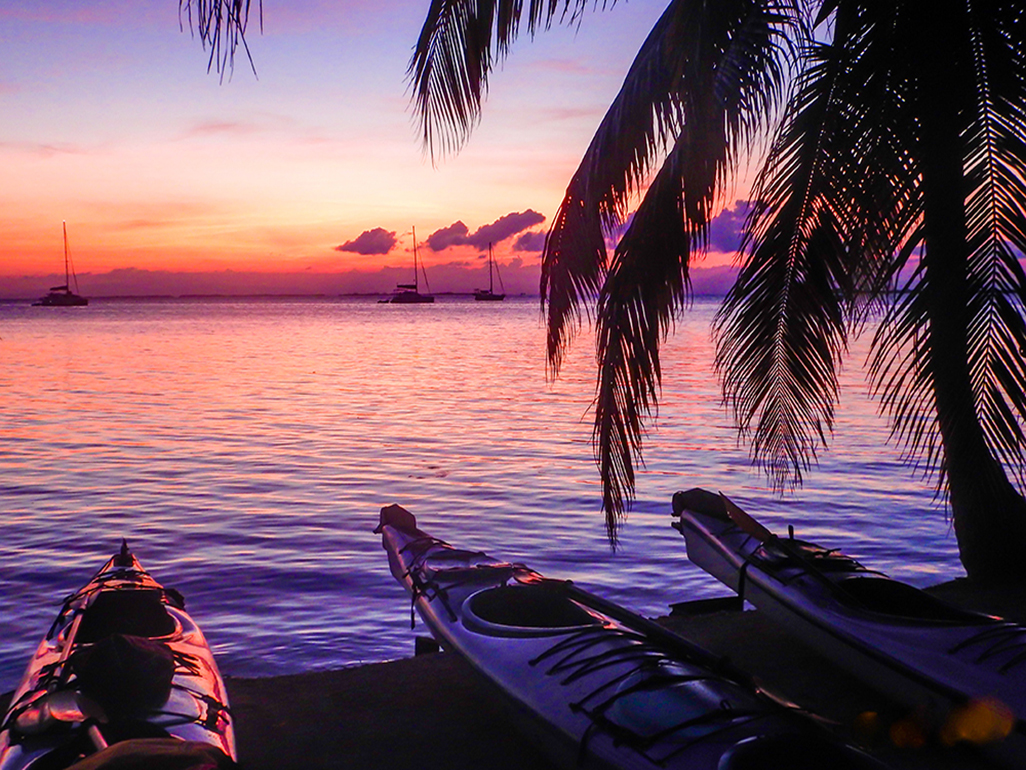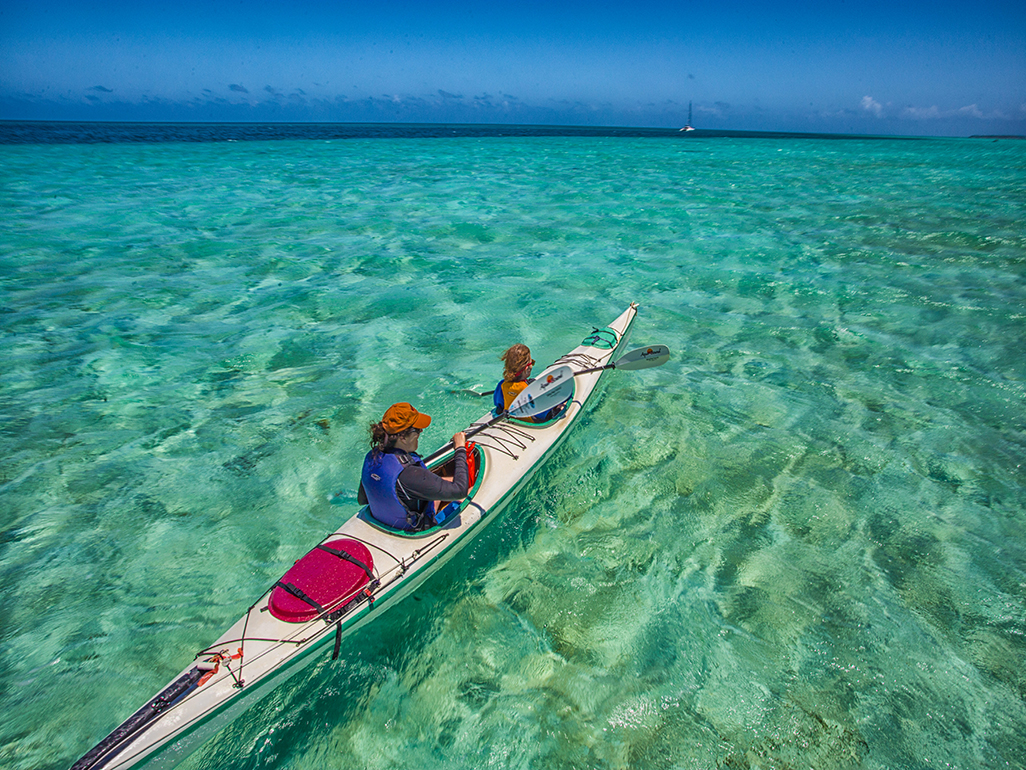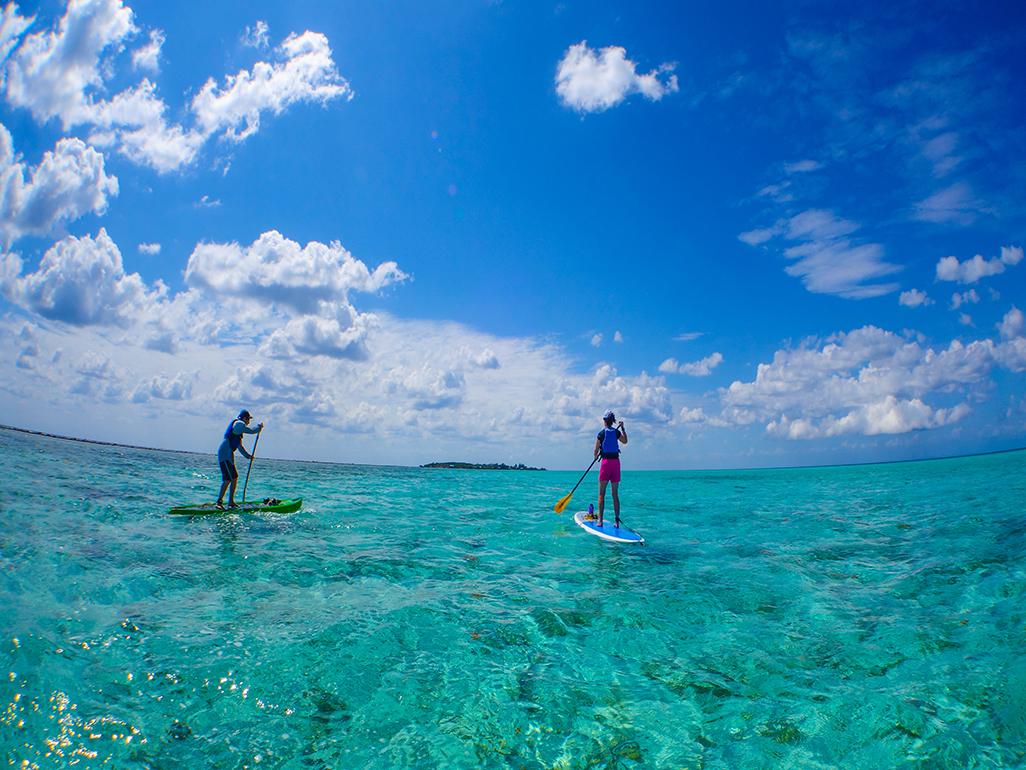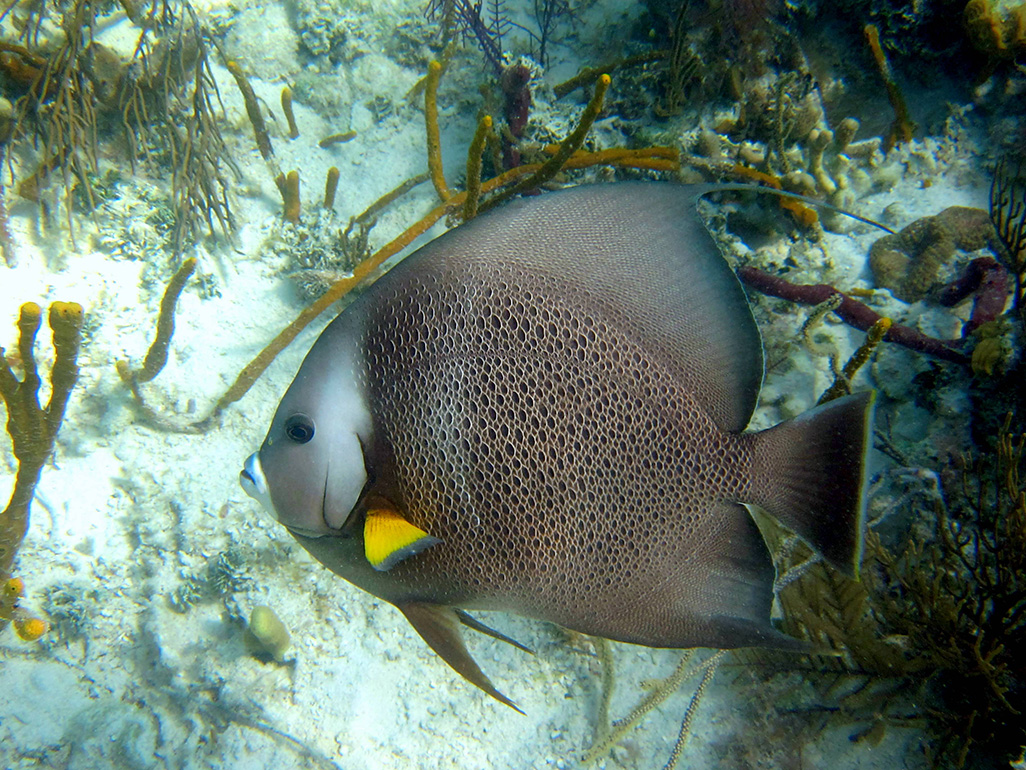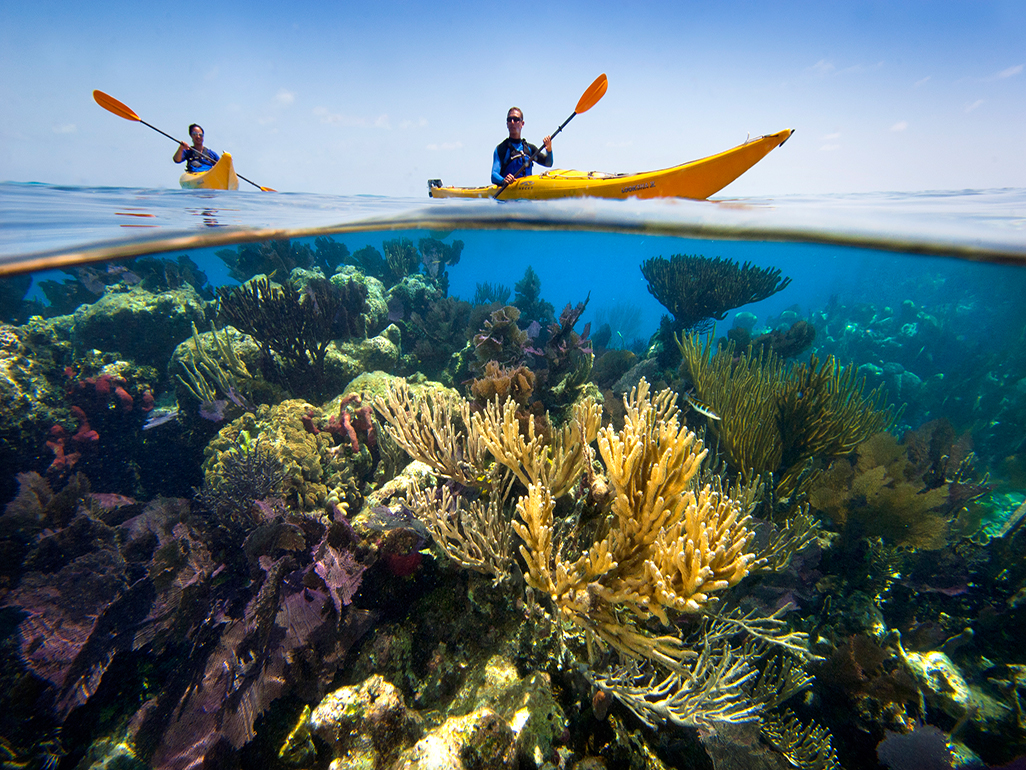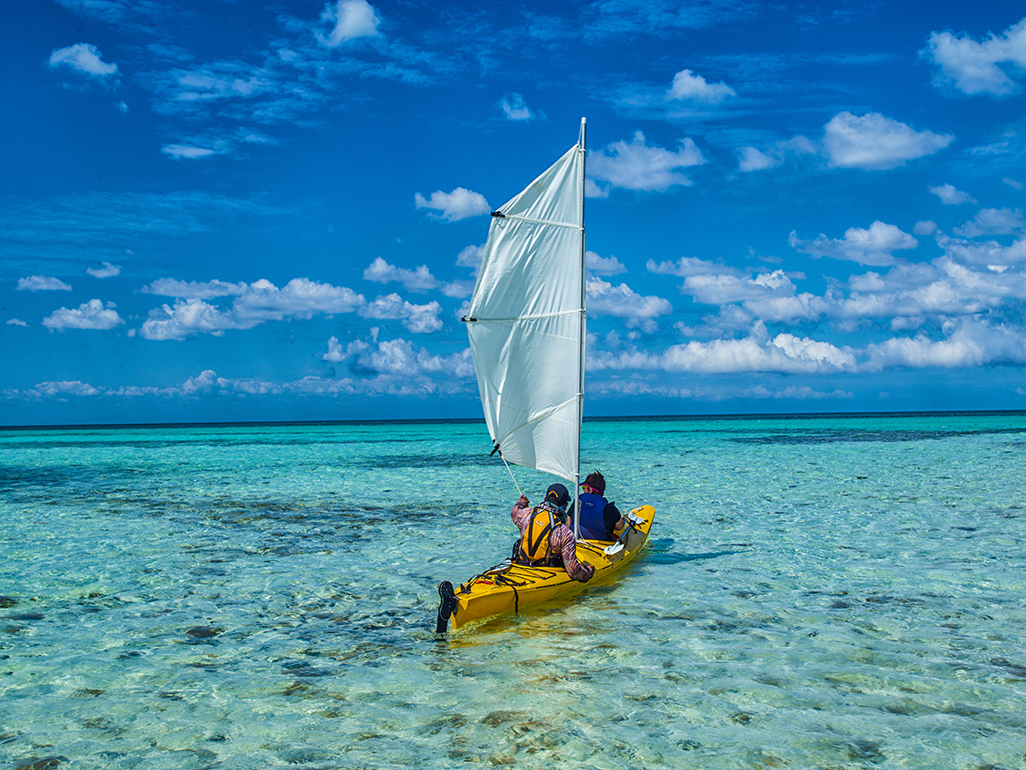Itinerary
Here is your chance to kayak, sail, and snorkel the idyllic Cayes of the central reef system with a comfortable bed and shower each night! Our lodge-based adventure on the Barrier Reef travels from island to island, giving you lots of adventure and great snorkelling while getting a chance to visit some of the smaller, lesser-known lodges in Belize.
Day 1
Upon arriving at the Belize International Airport one of our representatives will meet you and welcome you to the country. You will be taken to the Tropical Education Centre which is adjacent to the Belize Zoo. The accommodations are forest cabanas situated in the midst of idyllic tropical pine forest. There is a network of interpretative trails and wildlife viewing platforms at your doorstep. The Tropical Education Centre allows you to explore the diverse ecology of Belize and is the ideal starting point for the adventure that awaits you. After checking into your accommodations you will enjoy a ‘Welcome to Belize Dinner’ with your fellow travelers and our Belizean guide team. As the evening unfolds, you can participate in the optional nocturnal tour of the Belize Zoo.
Accommodation: Tropical Education Center
Meals: Dinner
Day 2
Waking up to the sounds of the tropics is a pure delight with the chatter of parrots and parakeets flying overhead. The fresh morning air scented with tropical blossoms adds to the expectation of an exciting, adventure-filled day.
After breakfast, we travel the Hummingbird Route through the Maya Mountains to meet with a boat charter waiting to take you to your first island, Tobacco Caye, on the Southern Barrier Reef.
We’ll introduce you to the tropical marine environment and begin teaching the fundamentals of sea kayaking and snorkeling. Safety procedures, group and self-rescues, and touring techniques will be reviewed. You can enjoy a swim or explore the island shoreline.
After a tasty Belizean lunch, you will paddle over submerged coral reefs, turtle grass beds, and through narrow mangrove channels.
Accommodation: Tobacco Caye
ParadiseMeals: Breakfast, Lunch, Dinner
Day 3
Situated on the Barrier Reef in the heart of the Southwater Caye Marine Reserve you will be ideally positioned to explore the surrounding reefs and Cayes. Starting with a steaming mug of coffee and fresh tropical fruits you can enjoy an early morning swim or paddle before breakfast.
The focus for the morning will be snorkeling and kayaking. Your first snorkeling session begins with a thorough demonstration as well as beginner to advanced instruction on the Tobacco Caye cut and at the outer reef walls. While we are based at Tobacco Caye you also have the option to use Stand Up Paddle Boards (SUPS) instead of kayaks.
In the afternoon you’ll paddle to nearby Cayes to explore the sheltered lagoons and mangrove channels. After an exciting day of exploration and learning, you’ll return for an evening on Tobacco Caye.
Accommodation: Tobacco Caye Paradise
Meals: Breakfast, Lunch, Dinner
Day 4
Start your morning quietly kayaking or Stand Up Paddleboarding. Gazing south (following the line of breaking waves along the Barrier Reef crest), you will be able to see the next island you’ll be traveling to today – Southwater Caye.
After packing the kayaks with your personal gear bag and wishing fond farewells to your hosts you’ll start your day on the water with an introduction to kayak sailing. You’ll paddle and sail your kayaks along one of the most beautiful sections of the Belizean reef system.
The waters are shallow and clear and you’ll see a tremendous variety of marine life, including southern stingrays, eagle rays, grouper, nurse sharks, and more. As you make your way to Southwater Caye, and its swaying coconut palms, this is a day you’ll wish would never end.
You’ll land your kayaks on the beach, check into your accommodations, enjoy an ice-cold drink, and explore the island before a delicious dinner. Later, you can maybe try a little bonefishing on a fly rod or even a nighttime snorkel session on Southwater cut.
Accommodation: Southwater Caye
Meals: Breakfast, Lunch, Dinner
Day 5
You’ll have plenty of time to kayak, snorkel, fish, and enjoy the scenery and marine life of Belize. You’ll explore different regions of the Barrier reef including the inner and outer walls, patch and fringing reefs, mangrove ranges, and protected lagoons. For diving enthusiasts or those who’d like to try diving for the first time, we can arrange Discover Scuba courses or diving sessions with advance notice. As you explore by kayak, it is not uncommon for the routes to cross those of the fishermen who make their living from the sea. These candid interactions with the locals can be fun and provide us with extraordinary insight into a way of life very different from our own.
Accommodation: Southwater Caye
Meals: Breakfast, Lunch, Dinner
Day 6
Your last day on the Cayes will be spent paddling to Billy Hawk Caye (in the Blue Ground Range). This is a Garifuna fishing camp where you will have lunch and enjoy an afternoon of snorkeling.
Accommodation: Southwater Caye
Meals: Breakfast, Lunch, Dinner
Day 7
After an early breakfast, your water taxi will carry you back to the mainland town of Dangriga where the trip finishes. Any extra luggage that you have stored at our Operations Base will be returned to you. Taxis can be arranged to the Dangriga airport for your connecting flight to the Belize International Airport, or to local bus stations to continue exploring Belize on your own.
Accommodation: N/A
Meals: Breakfast
Rates in 2019/2020
Rates per person based on double occupancy. For single or triple rates, please inquire.
Rates in USD
- includes taxes & fees
Rates in CAD
- includes taxes & fees
A representative will meet you at the airport. Meeting arrangements are based on your international flight arrival time. As trip participants will be arriving on different flights throughout Day 1, we have arranged transport to the Biltmore Plaza Hotel as a pleasant and comfortable place to wait for those who have arrived on earlier flights than other group participants. Typically, we will have gathered all trip participants by 4-5pm and be heading on our way to the Tropical Education Center.
1:00-1:30 pm – The first vehicle will depart the International Airport between 1 – 1:30 pm to the Belize Biltmore Plaza Hotel where you will be able to relax by the pool, have a drink at the outdoor bar, eat a meal, and wait for the rest of the guests to arrive. If you arrive earlier than this scheduled pick-up and do not want to wait at the airport for the driver, please feel free to take a cab to the Biltmore Hotel.
The trip ends in Dangriga, which is a short flight away from Belize City. The transfer back to Dangriga is scheduled to arrive there approximately at noon. Please schedule your international departure flight (if on the same day) no earlier than 3 pm.
- Accommodation as described in the itinerary
- Meals as described in the itinerary
- gov taxes & fees
- activities
- guiding services
- equipment as described in the itinerary
- extensive pre-trip information
- international flights
- domestic flights (Belize City – Dangriga – Belize City)
- airport fees and taxes
- costs and fees incurred due to delays or missed flights
- additional arrangements
- Snorkel gear
- personal gear & purchases
- tips
- expenses of a personal nature
Weather
Insects
Yes, there are insects, including some that can carry nasty diseases. It is important to protect yourself adequately by wearing light-weight, long-sleeved shirts and pants and by using an effective insect repellent (those containing 15%-20% Deet tend to work quite well). To ward off sand-flies, coconut oil or skin-so-soft has proven most useful.
Electricity, cell phones & devices
The Basecamps (Lighthouse Reef, Glover’s Reef & Billy Hawk Caye) has solar and small fuel generators, which provide 110VAC power in the common areas for several hours each evening. Charging locations are in place for low drain power applications, typically for charging batteries.
However, it is highly recommended to leave unnecessary electronic equipment at home. The humidity and sand do not do the sensitive devices much good and you won’t believe the amazing extra benefit you get just from unplugging for a few days. Besides, electronic devices count as luxuries that few people can afford in these parts of the world. Thus, they represent an unnecessary temptation. Neither the tour operator nor we take any responsibility for lost, stolen or damaged items. Please make sure all such items are adequately protected and safely stored.
Cellular with Data Service is available in many parts of Belize. Service is less reliable as you head offshore and in many of the more remote inland areas you will find cell service becomes less available. Accessing these services while roaming becomes very expensive.
Snorkeling in the Tropics
For many, the highlight of their trip is the time spent exploring the wonders of the underwater world.
This does not require great skill or expensive equipment to accomplish. IE guides enjoy teaching the simple skills necessary to enjoy snorkeling.
In many of the areas we explore, the water is shallow enough to stand. Initially, we enter the water from a beach but as our skill level increases, we will learn to enter and exit from our kayaks. This will enable us to experience longer and deeper dives as well as drift dives – floating along a patch of coral with our boats drifting behind us.
To ensure the reefs are protected for future generations we avoid damaging the coral by not touching, standing on, or dropping anchor on coral. As a living organism, many corals rely on nematocysts to sting their prey. These same nematocysts can sting humans ranging from mild to strong intensity. Care is taken to show all participants the coral species which should be avoided.
If you get cold easily a lightweight wetsuit or ‘shortie’ is recommended to keep from getting cold when spending extended time in the water. Polypropylene or Capilene long underwear work as well. In addition, this clothing also protects against sunburn. We highly recommend wetsuits for children.
Purchasing Snorkel Equipment
Knowing how to snorkel and what to watch for are all well and good, but inadequate equipment can spoil the best of conditions.
Therefore it is highly recommended you purchase equipment that fits comfortably. Borrowing a friend’s gear is okay for fins and snorkel but a mask must conform to the individual’s face to ensure a watertight seal. Nothing is more frustrating for snorkelers than water leaking into their masks. When shopping for a mask check for the following:
- A smooth seal around the mask. Both rubber and silicone work well. Check that the material is not cracked, brittle, or stiff – all signs of an old mask.
- Press mask to face and inhale through your nose. DO NOT PUT THE STRAP AROUND YOUR HEAD but leave it off in front of the mask. If the mask seals it will stay on your face even when you tilt your head down. Check that no hair gets between the mask and your face to break the seal.
- Make sure the front of the mask does not press against the bridge of your nose. This will get worse the deeper you dive. Vaseline around the edge of the mask helps for a better seal for men with beards or mustaches.
- Make sure the snorkel fits comfortably in your mouth. With fins, a snug fit is best. Complete foot fins rather than those with a strap around the heel are preferred. Leave enough room for socks if you wish.
- Above all else, try the mask in water (pool, bathtub, etc.) before you arrive in Belize. A good dive shop will gladly exchange an ill-fitting mask for one with a better fit.
Note: Equipment is available for rent in Belize but must be organized in advance. Please ask.
Using a new mask for the first time: New scuba masks have a residue left over from the manufacturing process that coats the lens. Unless this coating is removed from the inside of the lens, your mask will constantly fog up. One simple solution is to use toothpaste. Thoroughly rub the toothpaste around the lens with your finger or a soft cloth – if possible leave it overnight. Then rinse well, removing all the toothpaste. Rinse again and you should be good to go.
Before each snorkel outing: To help avoid your mask fogging up you can spit into your mask, rub the saliva around to coat the lens, and then rinse quickly. You can also coat the lens with a commercial defogging agent or bring a supply of baby shampoo, which works the same – this should be done before every outing.
Insurance
All trip participants are required to get Travel Medical / Evacuation Insurance. We also strongly suggest that you purchase Trip Cancellation Insurance. Some insurance packages include both bundled together.
Start Date |
End Date |
| 2019-11-16 | 2019-11-22 |
| 2019-11-23 | 2019-11-29 |
| 2019-11-30 | 2019-12-06 |
| 2019-12-07 | 2019-12-13 |
| 2019-12-14 | 2019-12-20 |
| 2019-12-28 | 2020-01-03 |
| 2020-01-04 | 2020-01-10 |
| 2020-01-11 | 2020-01-17 |
| 2020-01-18 | 2020-01-24 |
| 2020-02-01 | 2020-02-07 |
| 2020-02-15 | 2020-02-21 |
| 2020-02-22 | 2020-02-28 |
| 2020-02-29 | 2020-03-06 |
| 2020-03-07 | 2020-03-13 |
| 2020-03-21 | 2020-03-27 |
| 2020-04-11 | 2020-04-17 |
| 2020-04-18 | 2020-04-24 |
- Passport
- Photocopy of passport
- Air tickets
- Favorite snacks for between meals
- Personal spending and emergency funds
- 1 extra set of clothes for flight home
- 1 pair light running shoes for around camp
- 1 pair watersport sandals or water shoes (Teva’s or Keens are a good choice)
- 1 or 2 pair lightweight quick-dry long pants
- Underwear
- 2-3 pairs of socks
- 2 pair quick-dry nylon shorts and/or loose skirt or sarong
- 1 bathing suit
- 3 t-shirts
- 2 long sleeved shirts preferably with a collar (for protection from the sun & bugs). Silk shirts work well and dry quickly
- 1 fleece jacket or wool sweater (this will keep you warm even when wet)
- 1 good quality rain jacket
- 1 wide-brimmed sunhat (to keep the sun off your face and neck)
- Sunglasses with band (Chums, Croakies, etc.)
- 1 bandana (handy for sun protection)
- Spare set of eyeglasses (even if you wear contact lenses) and contact lens solution
- 1 headlamp and spare batteries
- Mask, fins, snorkel
- Shortie wetsuit, especially for kids (not essential but water temperatures in Dec. and Jan. can be cooler)
- Capilene or polypropylene, or silk long underwear (great for snorkeling)
- 1 liter water bottle
- 1 TOWEL (either a small camp towel or thin beach towel)
- Personal toiletries
- Personal medication and prescriptions
- Small personal First Aid Kit: i.e. Band-Aids, aspirin/Tylenol, scissors, tweezers, safety pins
- Sunscreen – biodegradable reef-friendly sunblock
- Biodegradable soap
- Vaseline, Aloe Vera lotion, or skin care cream
- Caladryl/After Bite/Benadryl Cream or lotion to ease itching from bug bites
- Insect repellent (20 – 100% Deet)
- 2 to 3 garbage bags – serves as extra waterproofing protection and keeps wet gear separate
- Earplugs if you are a light sleeper or sensitive to wave noise and animal/bird sounds
Optional Packing List
- Camera equipment – waterproof or waterproof throw-away camera
- Binoculars
- Bug jacket
- Skin-So-Soft Avon used as a repellent
- Handy Wipe moist tissues for hands and face and/or waterless bacterial cleanser
- Toilet paper for emergency travels
- Lighter
- A good reading book, log book, and pen
- Wine or favorite liquor
- Small day-pack (can be handy on any of our trips)
- Mesh bag for carrying snorkel gear
- Fishing rod and tackle
- Art supplies, sketching tools, or watercolors
- 1 pair of light cotton gloves/bike gloves (for protection from the sun/blisters when paddling)
- Aquasocks
- Foot powder
- Waterproof watch
Packing for a purpose
Our “Make Space in your Case” initiative gives you an opportunity to donate school supplies to students in Belize. Share a pound or two of your suitcase/luggage space for materials (pens, pencils, erasers, etc.) and we’ll take care of the rest to make sure the supplies get to the kids and teachers in Belize who need it the most.
We gather the school supplies, packs them off and distributes to the schools and students. Here are some ideas of materials that you can donate to make a real difference in people’s lives.
- Kids story books in English
- Kids story books in Spanish
- Arts and crafts materials
- Colored construction paper
- Colored pencils
- Maps Notebooks
- Solar calculators
- Used textbooks for teachers at any level
- Watercolor paint brushes
Water
Fresh water out on the Cayes is at a premium. Most water available on the islands is from rainwater catchment systems or has been imported from the mainland, so water conservation is of the utmost importance to the inhabitants of the islands.
Each lodge will have a closed water system of their own which is controlled with hydro, solar and generator-powered water pumps. Water is pumped into raised black tanks to provide pressure to the system. The water in these tanks is warmed by the sun. At some lodges, this will be the only source of heat. Some facilities will have a propane or electric hot-water-on-demand system. Often generators will be stopped through the night as a conservation measure. This can affect water pressure and availability of light in the night and early morning.
Garbage
Unfortunately, garbage (especially plastics) is found throughout the world’s coastal regions, Belize is no exception.
Weather, wind, and currents can all cause an excessive build-up of garbage to occur along the beaches and in the mangroves. The sad part is that much of this garbage is from offshore and not from mainland Belize. Besides making sure that we leave no garbage while on tour, we try wherever possible to pick up some of this extra refuse. IE organizes a number of work crews each season to clean up the Cayes where we camp and it is an integral part of our educational trip programs.

